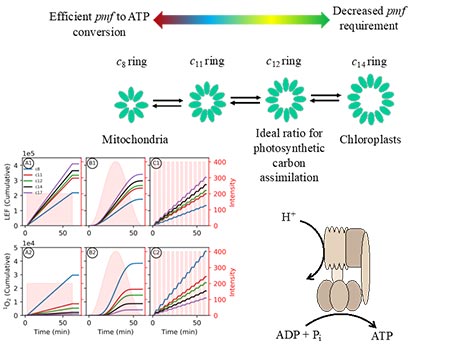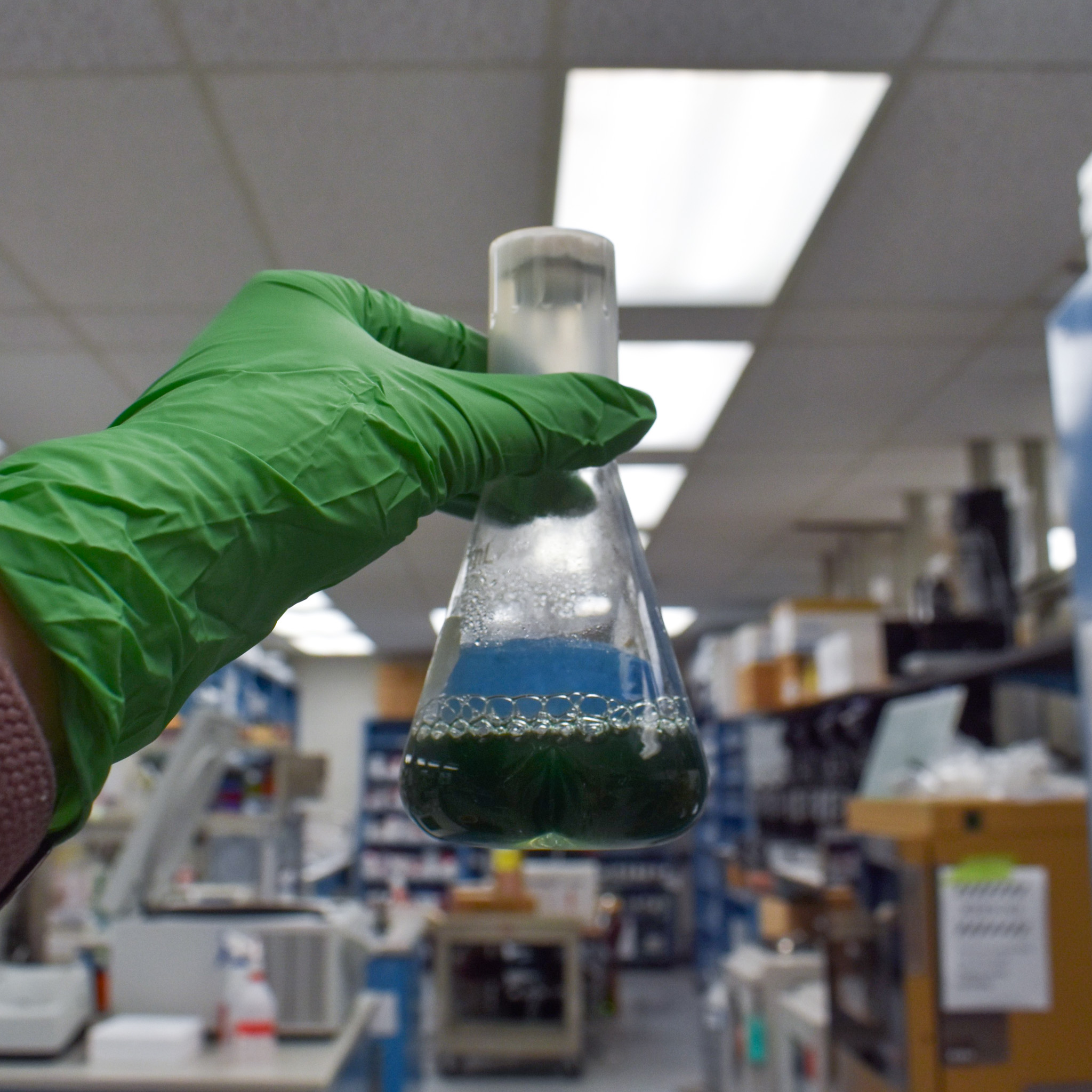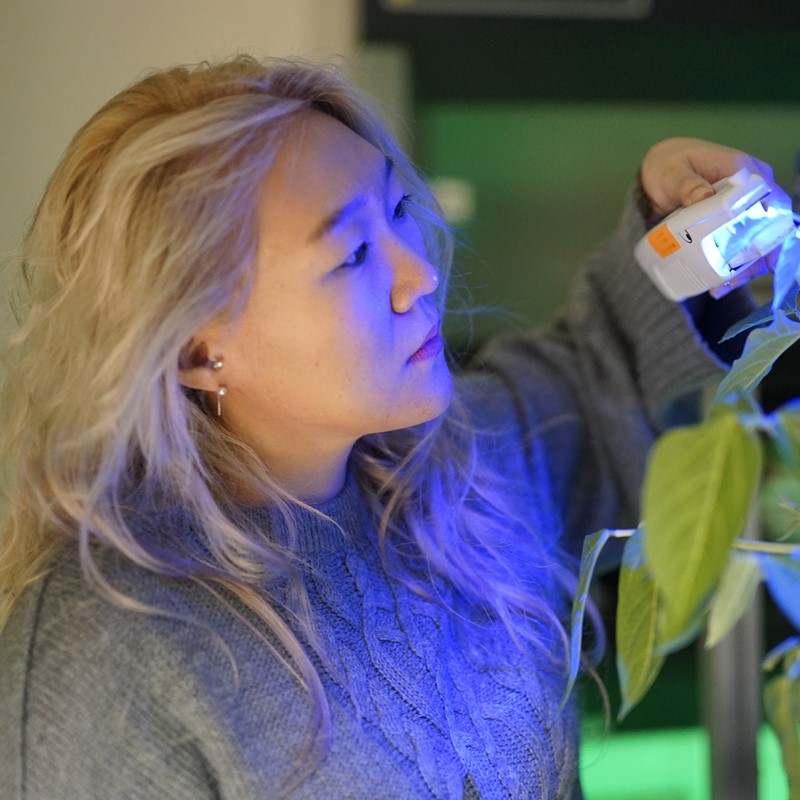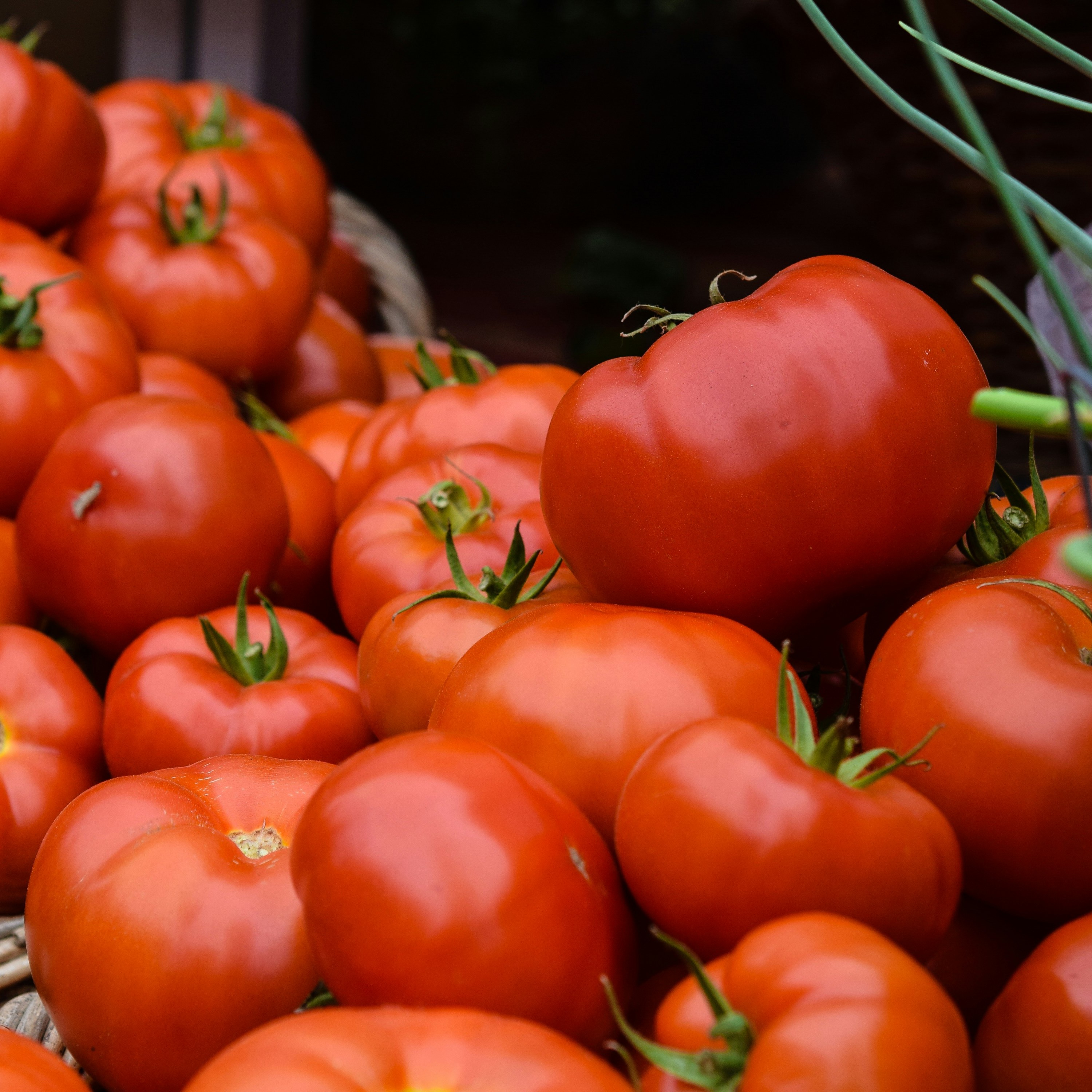The limits of photosynthetic efficiency
Increasing the efficiency of the ATP synthase could lead to ROS production. This has important implications for synthetic biology efforts to alter photosynthetic efficiency by engineering the ATP synthase.
 Scientific Achievement
Scientific Achievement
Experimental and computational studies demonstrated that increasing the efficiency of one energy storing reaction in photosynthesis will likely lead to production of deleterious reactive oxygen species in others. To cope with these trade-offs, Nature has tuned photosynthesis to balance the needs for efficient and safe energy storage.
Significance and Impact
It has been proposed that genetically modifying the protein subunit stoichiometry for the chloroplast ATP synthase could lead to substantial increases in the efficiency of photosynthesis. We show that this strategy will likely fail because it leads to photodamage and loss of yield. Instead, our work suggests a new engineering approach that increases efficiency while avoiding deleterious side reactions.
Research Details
- Photosynthesis uses light to store energy in a redox gradient and an electrochemical proton gradient (proton motive force, pmf), which drives the synthesis of ATP through the thylakoid FoF1-ATP synthase. ATP synthase structure and function are conserved across biological kingdoms, but the number of ion–binding c subunits varies between organisms, which alters the proton/ATP ratio, with implications for metabolism. Essentially, the c-ring size sets the “gear ratio” of photosynthesis, and it has been suggested that decreasing their size, or increasing the gear ratio, could improve photosynthetic efficiency.
- However our experiments and simulations predict that the change in energy storage will cause large increases in pmf, destabilizing charge separated states in photosystem II, leading to production of reactive oxygen species. Thus, the large c-ring size may be optimized to prevent photodamage. This has important implications for the evolution and regulation of photosynthesis as well as for synthetic biology efforts to alter photosynthetic efficiency by engineering the ATP synthase.
- We propose that engineering efforts be focused instead on adjusting the storage of pmf and the energy storing reactions of PSII to prevent recombination.
Related people: Geoffry Davis, David M. Kramer (CA)
This work was primarily funded by the US Department of Energy, Office of Basic Energy Sciences.



